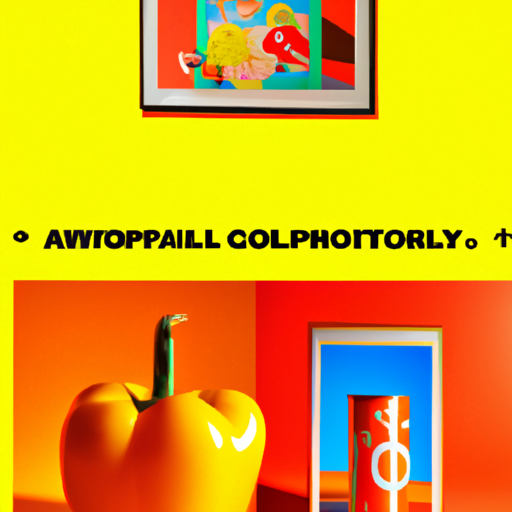
-
Table of Contents
- Incorporating Whimsy and Playfulness in Design
- The Power of Whimsy and Playfulness
- Examples of Whimsical and Playful Design
- Google Doodles
- MailChimp’s Freddie
- Slack’s Loading Messages
- Tips for Incorporating Whimsy and Playfulness
- Know your audience
- Balance playfulness with usability
- Use interactive elements
- Inject humor and surprise
- Experiment and iterate
- Summary
Incorporating Whimsy and Playfulness in Design

Design is not just about functionality and aesthetics; it is also about creating an emotional connection with the user. Incorporating whimsy and playfulness in design can be a powerful way to engage users, evoke positive emotions, and create memorable experiences. In this article, we will explore the importance of whimsy and playfulness in design, discuss its benefits, and provide practical tips on how to incorporate it effectively.
The Power of Whimsy and Playfulness
Whimsy and playfulness are elements that can bring joy, surprise, and delight to design. They can break the monotony, spark curiosity, and create a sense of wonder. When used appropriately, these elements can make a design more engaging, memorable, and enjoyable for the user.
Research has shown that incorporating whimsy and playfulness in design can have several positive effects:
- Increased user engagement: Whimsical and playful designs capture the attention of users and encourage them to interact with the product or service. This increased engagement can lead to higher user satisfaction and loyalty.
- Enhanced brand perception: Whimsical and playful designs can help differentiate a brand from its competitors. They can create a positive and memorable brand image, making the brand more relatable and appealing to the target audience.
- Improved user experience: Whimsical and playful designs can make the user experience more enjoyable and entertaining. They can reduce user frustration, increase motivation, and make complex tasks feel more approachable.
- Boosted creativity and innovation: Whimsy and playfulness can inspire creativity and encourage out-of-the-box thinking. They can create an environment that fosters innovation and encourages users to explore new possibilities.
Examples of Whimsical and Playful Design
Now that we understand the benefits of incorporating whimsy and playfulness in design, let’s explore some real-world examples that showcase how these elements can be effectively used.
Google Doodles
Google is known for its playful and whimsical approach to design, especially through its Google Doodles. These are temporary modifications of the Google logo on the search engine’s homepage to celebrate holidays, events, anniversaries, and notable figures. Each Google Doodle is unique and often interactive, inviting users to engage with the design and learn more about the subject being celebrated. These playful designs not only entertain users but also create a sense of anticipation and surprise.
MailChimp’s Freddie
MailChimp, an email marketing platform, incorporates whimsy and playfulness into its brand identity through its mascot, Freddie. Freddie is a friendly and playful chimpanzee that appears in various illustrations, animations, and interactions throughout the MailChimp platform. By incorporating Freddie into their design, MailChimp creates a sense of fun and approachability, making the user experience more enjoyable and memorable.
Slack’s Loading Messages
Slack, a popular team communication platform, adds a touch of whimsy to its loading messages. Instead of displaying a generic loading message, Slack surprises users with humorous and playful messages like “Making the pixels dance,” “Warming up the hamsters,” or “Summoning the loading spinner.” These playful loading messages not only entertain users during wait times but also create a positive and lighthearted experience.
Tips for Incorporating Whimsy and Playfulness
Now that we have seen some examples of how whimsy and playfulness can be effectively used in design, let’s explore some practical tips on how to incorporate these elements into your own designs:
Know your audience
Understanding your target audience is crucial when incorporating whimsy and playfulness into design. Different demographics may respond differently to playful elements, so it is important to tailor your design to match the preferences and expectations of your target users.
Balance playfulness with usability
While whimsy and playfulness can enhance the user experience, it is important to strike a balance between playfulness and usability. Playful elements should not hinder the functionality or clarity of the design. They should complement the overall user experience and make it more enjoyable, rather than distracting or confusing the user.
Use interactive elements
Interactive elements can add an extra layer of playfulness to your design. Incorporate interactive features such as animations, microinteractions, or hidden surprises that users can discover and engage with. These interactive elements can create a sense of exploration and reward, making the user experience more engaging and memorable.
Inject humor and surprise
Humor and surprise are powerful tools for creating whimsical and playful designs. Injecting humor into your design can evoke positive emotions and create a memorable experience. Surprise users with unexpected elements or interactions that catch them off guard and make them smile or laugh. However, it is important to ensure that the humor is appropriate and aligns with the brand’s tone and values.
Experiment and iterate
Whimsy and playfulness thrive on experimentation and creativity. Don’t be afraid to try new ideas and take risks in your design. Test different playful elements, gather user feedback, and iterate based on the results. Continuously refining and improving your design will help you find the right balance of whimsy and playfulness that resonates with your audience.
Summary
Incorporating whimsy and playfulness in design can have a profound impact on user engagement, brand perception, user experience, and creativity. By breaking the monotony, sparking curiosity, and creating a sense of wonder, whimsical and playful designs can make a lasting impression on users. Through examples like Google Doodles, MailChimp’s Freddie, and Slack’s loading messages, we have seen how these elements can be effectively used in real-world designs. By following practical tips such as knowing your audience, balancing playfulness with usability, using interactive elements, injecting humor and surprise, and experimenting and iterating, you can incorporate whimsy and playfulness into your own designs and create memorable experiences for your users.
